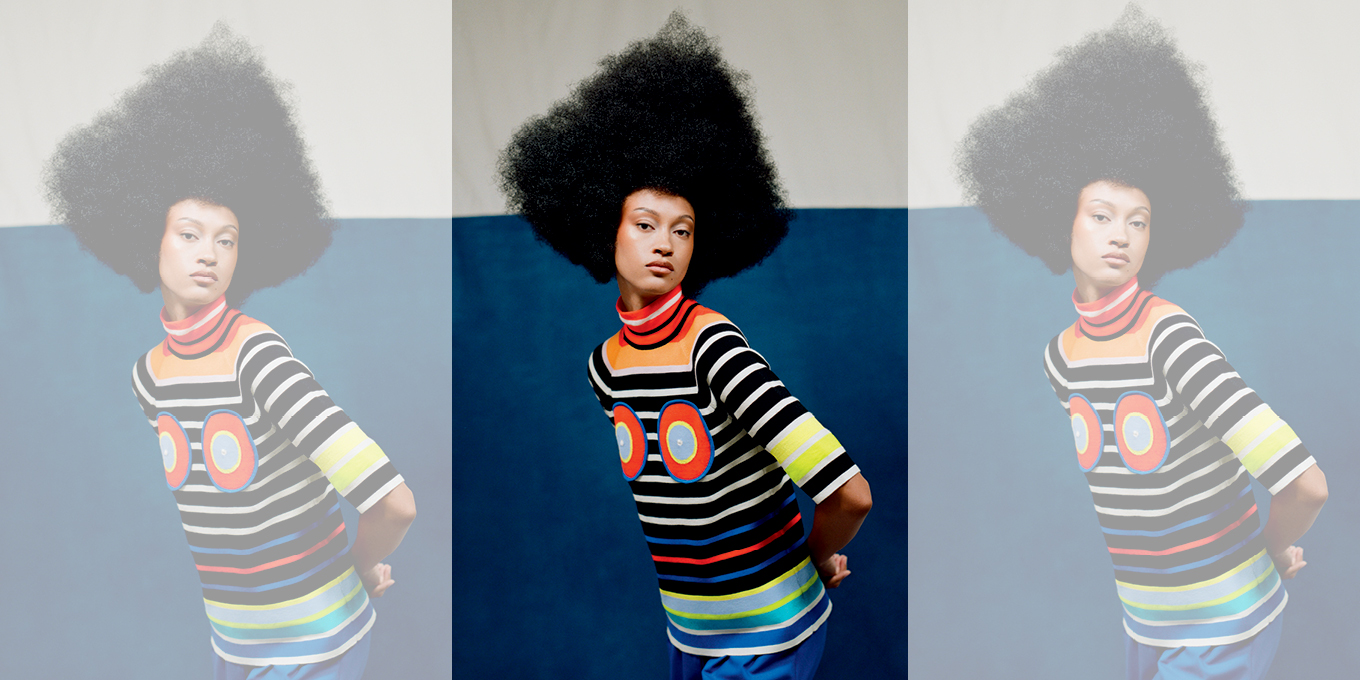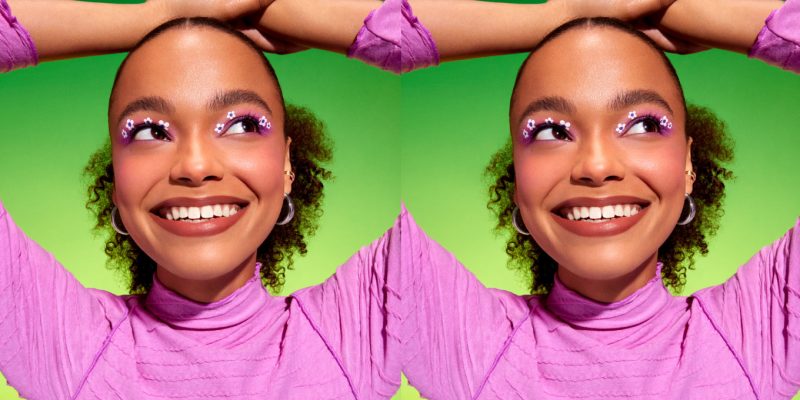Hair
Race-Based Hair Discrimination
How we can learn, change and move forward in a more inclusive direction.
by : Jada Jackson- Jun 1st, 2021

Imaxtree
Being discriminated against based on your hair is nothing new in Canada. Back in 2014, Lettia McNickle was sent home from her job at Madisons New York Grill & Bar in Montreal for wearing her hair in cornrows. According to McNickle, her boss stated that she “did not want that type of hairstyle in her establishment.” In 2018, the Quebec Human Rights Commission ruled that this was an act of racial and gender discrimination. Though the restaurant owner was ordered to pay McNickle $14,500 in damages, they have yet to do so, causing the case to move on to the Human Rights Tribunal. In an incident in 2016, Toronto-based waitress Akua Agyemfra was sent home after wearing her natural hair in a bun. In the same year, Cree Ballah, a worker at a Zara store in Toronto, was told that her box braids did not fit the “professional” appearance required by the company. More recently, in 2019, Natasha Doyle-Merrick quit her job at AGO Bistro in Edmonton after being told not to wear her natural hair down because her employers feared it would “scare” away customers.
These incidents are a drop in the bucket of evidence that points toward sentiments non-Black people have long held about Black people’s natural hair, and these skewed points of view are only upheld by the Canadian media’s lack of representation of darker-skinned Black women with coilier hair textures. “Afro hair and darker-skinned Black women are still marginalized and/or erased from Canadian media,” says Cheryl Thompson, an assistant professor at Toronto’s Ryerson University. “And if a Black woman with dark skin and Afro-textured hair does appear on TV, she’s likely represented as aggressive and unattractive—in other words, she is the trope of the Mammy/Sapphire. It is very disheartening to see this imagery.” Thompson’s book, Beauty in a Box: Detangling the Roots of Canada’s Black Beauty Culture, details the lesser-known history of the expansion of the Black-hair-care industry in Canada.
While Doing her research,Thompsons was surprised by how dependent Canada’s Black-hair-care industry was on Black-centric media at the time. In the 1970s, “newspapers such as Contrast and Share in Toronto were literally the only outlets for the promotion of Black beauty products, live demonstrations and general industry news,” she says. “It’s unfortunate that a majority of the mainstream-media outlets at the time did not push beauty and hair-care advertisements geared toward Black people.” She points to how this pattern is still being perpetuated today.
There has been progress, though slow, thanks to pioneers in the industry, like Beverly Mascoll, a major figure in the overall establishment of the Black Canadian hair-care industry; she saw the gap in the hair-care market for Black women in our country and launched her business, Mascoll Beauty Supply, in 1970 with only $700. She sold her hair products from the back of her car before partnering with big-time Chicago hair-care entrepreneur George E. Johnson of Johnson Products. By 1971, she was a leading force in the Black-hair-care industry throughout the country.
When talking about the state of hair discrimination in Canada, we also need to look at the institutions in place that perpetuate the idea that natural hair is an oddity that does not belong in the mainstream. This is all too obvious if we consider that many beauty schools around the country have yet to establish a curriculum that regularly includes working with Afro-textured hair types. Last summer, in the midst of the Black Lives Matter protests, three hairdressers from Montreal, Calgary and Toronto, respectively, started petitions addressing this lack of representation, demanding that natural-hair types take their rightful place in Canadian beauty-school programs. All told, the three petitions gathered over 30,000 signatures. Despite the outpouring of public response, the government hasn’t implemented anything that rises to the occasion.
The CROWN Act—Creating a Respectful and Open World for Natural Hair—is a law that was introduced in California in 2019 that protects women and men of colour from race-based hair discrimination. With seven more states and counting on board, many are hopeful that Canada can adopt similar laws. “I think this legislation will only come if there is constant and consistent pressure on our politicians to create such legislation,” says Thompson. “I am hopeful.”
The conversation of race-based hair discrimination is taxing but necessary, which is why we should be willing to listen, learn and change.
Hair Talk: We reached out to Black stylists and bloggers to get their thoughts on the issue.
On why Canada’s hair schools should require that students learn about textured hair
“You would think it would be common sense for hairstylists to have at least a basic understanding of all hair types and textures. They may choose to specialize in certain areas of hair care, colouring or cutting, for example, but a knowledge of a spectrum of hair textures is essential, especially in a place as diverse as Canada.”— Annastasia Liu, content creator and blogger
“It’s beyond time that all hair types be recognized. Canada is very multicultural, and we should be able to get our hair done anywhere. A good stylist should be able to serve anyone who walks through the door.” — Nancy Falaise, owner of Salon Académie Nancy Falaise in Montreal
On Canadian media lacking Afro or textured-hair representation
“The media’s harmful narrative [around] Black hair is simple: It is not considered ‘good hair.’ Everyone looks to the media for beauty trends, inspiration, information and education. The under-representation and misrepresentation of textured hair has encouraged poor judgment and ignorance about natural hair. From terms like ‘nappy,’ ‘unkempt,’ ‘untidy,’‘unprofessional’ and ‘hard to handle’ to worse derogatory terms, Black girls hear it and hurt from it all.” — Zermarla Walcott, certified natural-hair consultant
“I believe that the Canadian market can be improved overall. I am talking about TV commercials, social-media advertising, beauty campaigns and journalists. Without diversity on these different platforms, we fail our audience and communities by sending a message that natural hair isn’t the norm among people of colour.”— Jennifer Jackson, content creator
On experiencing hair discrimination
“I’ve had women in the workplace throw compliments and insults in the same breath, like referring to my Afro as a ‘mop head.’ I’ve had managers ask me why I came to work with my hair ‘looking so big’ and co-workers refer to my natural hairstyle as ‘cute but not a style to leave the house with.’”— Z. Walcott
“When I wore an Afro to work one day, I was told by a manager that I needed to ‘make sure [my] hair was presentable’ for my next shift. As a young woman who needed the money, I had to comply, of course.” — J. Jackson
On creating an online presence and platform
“When I started sharing my natural-hair journey online nearly five years ago, I wanted to be a resource for those who felt they had limited styling options because of their natural hair. I love experimenting with new styles and techniques, so sharing them online is something that comes naturally to me.” — A. Liu
“I love doing hair—it’s been my passion for years. I found a love for my crown after I lost all my hair during breast-cancer treatment. I accepted and cherished my curly hair after that. I decided to specialize in curly hair because I saw the lack of information and resources available to women with curls, and eight years later, here I am. I decided to do workshops for young teens to help them see the beauty in themselves and their crowns. If we give them confidence at 13, imagine what they can become.” — N. Falaise
Read more:
Is the Wellness Industry Too White?
Meet Rice Water, the Ancient Beauty Practice You’ve Been Seeing All over Tiktok
Jennifer Lopez Just Got a Blunt Curtain Fringe (and We’re Obsessed)
Newsletter
Join our mailing list for the latest and biggest in fashion trends, beauty, culture and celebrity.
Read Next

Beauty
The Best Met Gala Beauty Looks Of All Time
From Taylor Swift's 'Bleachella' era to Rihanna's iconic 2011 braids, meet the best beauty moments in Met Gala history.
by : Katie Withington- Apr 26th, 2024

Culture
Benny Blanco Says He Fell in Love With Selena Gomez Without ‘Even Noticing’ It
Allow Benny Blanco to tell the straight-from-a-rom-com story of how he realized his feelings for his girlfriend and longtime friend.
by : Alyssa Bailey- Apr 26th, 2024

Culture
ELLE Escapes: Savannah
Where to go, stay, eat and drink in “the Hostess City of the South.”
by : ELLE- Apr 15th, 2024




